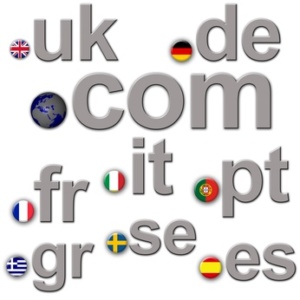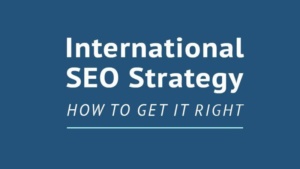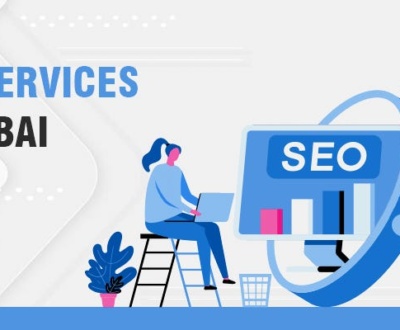Understanding International SEO and Search Trends Better- How It Works?
- February 21, 2018
- Advanced SEO Techniques, Brand development, GEO Target SEO Services

There is no doubt that bigger companies, brands or businesses with the aim of gaining international market share must focus on international SEO and must have a sound international SEO strategy implemented, however, the best strategy for your particular company or business will largely depend on the specific budgets, marketplace and objectives your have set.
If you are lucky enough to own a business that sells products or services internationally, your SEO (Search Engine Optimization) efforts need to operate globally or at least in the markets you tend to acquire. Every SEO Expert will agree that international SEO is complicated and also worth doing for such businesses. Different countries have different social behaviors, parameters and languages, or worse, different languages within the same country. Confusing search engines and making elementary SEO mistakes like duplicate content are easy to make.
Truth be told, good international SEO is very achievable and even easy if you plan the right approach for your unique business website. During the course of this article, we will highlight different ways for you to target international customers while ranking in multiple countries at the same time.
What Is International SEO?
Just like SEO is the process where you push your target business website to the top of search rankings in search engines like Google, international SEO organizes and optimizes your webpages allowing search engines to identify specific countries on your target list including particular content and language for each user in a given location.
Being comparable to SEO for small businesses or local businesses that target different locations within the same city or country, this is yet different as in the involvement of different languages and search behaviors of people in different countries.
Selecting Domain Names for International SEO

Domain names are of great significance for your international SEO campaigns. The ccTLD domains (country code top level domains) are known to default to a specific location, while TLDs (top level domains) can be used to point at specific countries by geo-targeting. Geo-targeting can also be implemented on the sub-folders and subdomains on these TLD domains. Selecting the correct domain for your specific international SEO requirements can have a big impact on your campaign.
However, informational content can be ranked international by both ccTLD domains and geo-targeted TLD domains as well. This one its own is a little contradictory for international SEO rules. Consider this head scratcher example of a USA based company we worked on in the past, majority of their international customers from all over the world found them through article on their blog posts that ran and is running on a USA ccTLD. Easy to see here how informational content can still rank internationally from a ccTLD. Yet, by no means should you just let go geo-targeting. Different and most product or service industries cannot make use of this feature and ranking internationally for all of such business industries takes the right content for the right audiences for them to do the job.
The one and only thing that matters here is not let Google confuse your content and pages with all their different versions and bury them deep down in cold freezing waters, from where there is almost not sunlight to be seen.
Targeting a Specific Country
When targeting a specific country with your international SEO, be sure to follow the below mentioned basic checklist:
- Make sure to get country-specific domain.
- Use Google Search Console to specify the exact location you are planning to target.
- Use Google My Business to register you actual address.
- Include your business’s street address on the website.
- For both usability and SEO, host your website locally.
- Use particular country-specific websites to get links from.
- Be sure to make use of local language.
Always be mindful of the fact that all these steps are taken to send clear signals to Google about where you do your business and who do you target for your content. Including all these signals will send multiple clues to Google making your intensions clearer.
Implementing Your International SEO Strategy

Setting off on international SEO strategy, you would start by targeting multiple countries you have interests in, this would have you scaling your approach across all the targeted locations. Although there are a few different ways to get that done but not every one of them will suit your specific circumstances.
1: Content Marketing

When you have the means to generate leads through content, promoting your content with SEO could be the most feasible and simplest option available especially keeping in mind that targeted content marketing can help ranking your pages internationally, even from a ccTLD site as well. A company like MOZ ranks internationally as a content and web solutions provider but at the same time their content ranks internationally as well that might be based from their one home country. Technically, this is one of the easier ways but you must be completely sure that this business model will suit your kind of company perfectly because for modern online businesses, this can usually be a good option but for traditional old school businesses having physical presence as well, things can be a bit more complicated.
2: Single TLD Site
Researching your market and industry before you bring on the full-on international SEO strategy is significant. For some industries, it is easy to just rank internationally without having many obstacles in their path at all. A safety harness company from Australia, without having done any specific international SEO is ranking in many English speaking countries including the UK, USA and Australia itself. For businesses like this one, just a traditional SEO process would be more than adequate to get their international SEO campaigns going with their being little trouble, if at all.
However, on the other hand, someone like Amazon will have tough international competition as businesses with the same niche and functional strategies will prose threats in their own local markets, whereas Amazon will be coming from a different market altogether.
3: Subfolders and Geo-Targeting
Creating localized sub-directories on your own site is one of the simplest and easiest ways when you are looking for country-specific content. Country specific content and language can be contained in these sub-directories while having them geo-targeted in Google Search Console at the same time. Consider the following examples and their pros and cons:
- website.com – with USA being the target.
- website.com/uk/ – with UK being the target.
- websitecom/de/ – with Germany being the target.
Following this method, you will get three major benefits, firstly, you will only be expanding your major exiting website meaning you will have less technical management and overhead costs to look for including hosting and many others. Secondly, the parent domain authority will be inherited to the sub-directories without there being a need for the new site growing it and lastly, there will only be one website to promote and while country and language specific links will still be required, it will still be a lot simpler and cost efficient than having to do the whole procedures for all the different sites in different countries.
And for the cons, the geo-targeting from the URL (universal resource locator) may not be recognized by the users and a single server location will be left for you. Although this might be an easy start to your international SEO campaign but before taking it you, understanding its limitations is very important.
4: Country Specific Domains

Either ccTLDs (country-code top level domains) or subdomains on a TLD can be used with this approach. These might just be two slightly different ways or methods to get same end goal. Consider the following:
- Country Specific ccTLD domains – The country associated with the ccTLD will automatically be targeted with this approach and it is easy to understand in many ways:
- Amazon.com – US based.
- Amazon.co.uk – UK based.
- Amazon.de – Germany based.
- Geo-Targeted subdomains – Google Search Console geo-targeting will be required for these TLD subdomains:
- www.website.com – for US based.
- uk.website.com – for UK based.
- de.website.com – for Germany based.
Businesses that have a physical presence, local offline marketing in the target country, the country specific ccTLD domains will be the most suitable approach. This will not be the most cost efficient because such businesses will require each site to be configured and marketed independently by their local teams in each market they are present in.
However, both these approaches provide the opportunity for businesses to use local web hosting and have clear location signals going out including country specific links to the URL. When you are entering a specific country’s market and are competing with local businesses residing that specific country, these strong signals deserve to be considered while making the decision to operate in that particular country.
When there is an opportunity for you to own all the international ccTLD versions of your domain, you should go with the ccTLD option. Since users prefer to click on their own ccTLD, this has the ability to deliberate strong branding benefits for your business. People over in the UK like .co.uk sites better, .fr is the preference for the folk down in France. The preferences and needs of your target customers should be the determining factor when selecting the right approach, SEO is the broader picture of all this.
Since users may not interpret or understand the domain exactly right, subdomains might just not be the most suitable approach. Impacting your click-through and trust rates negatively, this could impact the whole campaign and defeat the purpose altogether. However, when you want to play the long game and money or resources are not a problem for you, this can be an effective method as well. The likes of Amazon and eBay prefer this method as they implement their long-term international SEO campaigns. The main thing to consider here is that any issue or problem undertaken on the main site can be shadowed down across your entire portfolio of sites, so having your main site technically perfect (or close to it) before you go on the international routes is of much significance.
URL Variables
Looking at the broader picture, there might be another option available as well. URL variables such as, country=uk might sound like a probable option, however, since Google’s own multiregional and multilingual site’s pages have historically and presently state it as not being the recommended procedure because it just cannot be geo-targeted, its best to listen to Google’s advice and stay off this course of action.
Verdict
This is intended to provide a thorough insight into the topic of international SEO and we hope it gets you the idea pretty well. Your motives, budgets and marketplace will vastly affect your perception of the perfect technique and in most cases, all these options combined will decide which option you end up taking. Having to consider even more advanced Multilanguage SEO for countries where multiple languages need to be targeted for multiple locations, you just add another complex layer on top of the already complex mess international SEO has become.
All this technical talk might sound gibberish to the not so well informed, contact us at www.seo.ae and our friendly technical minds will help you get what you are looking for. We help businesses boost their local and international SEO in whichever markets they are looking to expand their endeavors in.
About us and this blog
We are a digital marketing company with a focus on helping our customers achieve great results across several key areas.
Request a free quote
We offer professional SEO services that help websites increase their organic search score drastically in order to compete for the highest rankings even when it comes to highly competitive keywords.
Subscribe to our newsletter!
Recent Posts
- How AI Is Reshaping SEO Strategies for UAE Businesses in 2025 April 10, 2025
- Top Tips to Help Small Businesses Find the Best SEO Agency in the UAE September 13, 2024
- How to Use AI Successfully to Elevate Your Onsite SEO Content Game in 2024 August 2, 2024








